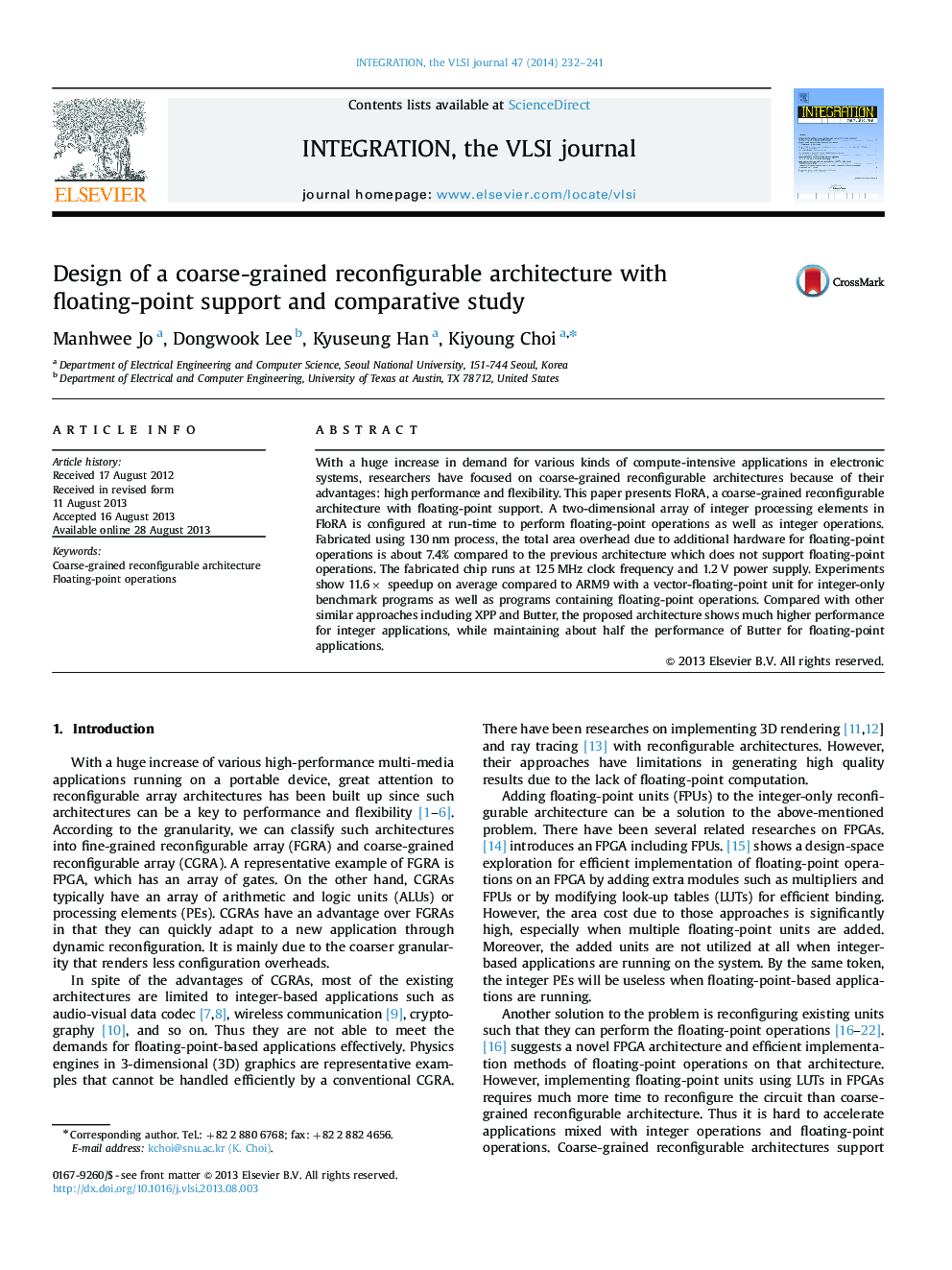| Article ID | Journal | Published Year | Pages | File Type |
|---|---|---|---|---|
| 538412 | Integration, the VLSI Journal | 2014 | 10 Pages |
•FloRA, a CGRA that can execute multiple floating-point (FP) operations concurrently.•Chip implementation is much faster than a benchmark processor with a VFP unit.•Area is much less than a benchmark CGRA with about the same performance.•Slower FP but much faster integer operations compared to the state-of-the-art CGRA.
With a huge increase in demand for various kinds of compute-intensive applications in electronic systems, researchers have focused on coarse-grained reconfigurable architectures because of their advantages: high performance and flexibility. This paper presents FloRA, a coarse-grained reconfigurable architecture with floating-point support. A two-dimensional array of integer processing elements in FloRA is configured at run-time to perform floating-point operations as well as integer operations. Fabricated using 130 nm process, the total area overhead due to additional hardware for floating-point operations is about 7.4% compared to the previous architecture which does not support floating-point operations. The fabricated chip runs at 125 MHz clock frequency and 1.2 V power supply. Experiments show 11.6× speedup on average compared to ARM9 with a vector-floating-point unit for integer-only benchmark programs as well as programs containing floating-point operations. Compared with other similar approaches including XPP and Butter, the proposed architecture shows much higher performance for integer applications, while maintaining about half the performance of Butter for floating-point applications.
